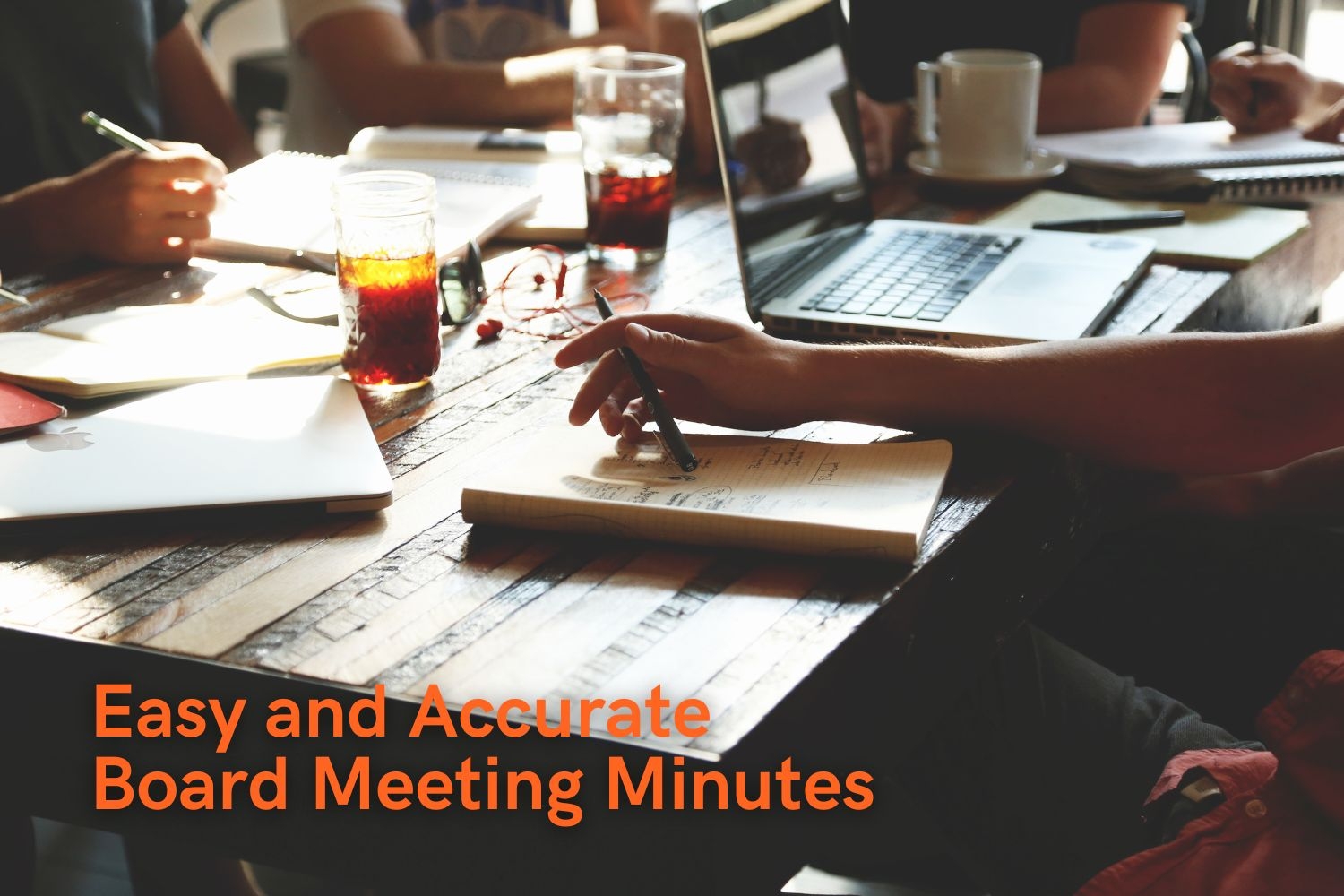What should be included in board meeting minutes?

Board meetings can be complicated and messy, filled with opinions, side conversations, heated debate, dead silence, …and also all the official decisions the board makes. How do you know what to record in the minutes?
Board meeting minutes are the official and legal record of decisions made at a board meeting. Minutes are treated as important enough that their correctness must be approved at a subsequent meeting, and future boards, funders, and the auditor may use them as an official historical record for the non-profit organization. It is important to record the right information and avoid unnecessary details.
Use the agenda as the guide for the minutes.
NAME, DATE, TIME, LOCATION
Mirroring the agenda is a great way to know what goes in the minutes and what stays out. The agenda will begin by recording the name of the meeting, the date, time, and location. The minutes should record the same details.
MINUTES
The agenda will have the word ‘Agenda’ at the top of the document, and the minutes should have the word ‘Minutes’ at the top of that document.
ATTENDANCE
Quorum is needed to ensure a board meeting meets the requirements to make official decisions for the organization. This is usually recorded by listing the names of board members in attendance, and those missing. Some non-profits may choose to keep a chart to track attendance throughout the year.
MOTIONS and ACTION ITEMS
As the meeting progresses through each item on the agenda, from minutes of previous meetings to business items, a good rule of thumb is to record only those decisions that impact the meeting and/or the organization.
Governing boards will record motions made, names of board members who made and who seconded the motion, and if the motion was carried or defeated. Governing boards may also record reports received.
Operating boards, in addition to recording motions, will also need to record action items, such as the tasks each board member will handle. Why? Operating board do the work of staff and operating board minutes will record action items similar to how a staff meeting would record action items.
Minutes do not record general discussion, opinions, reference information, or how people voted.
SPECIAL NOTES
Minutes should include special notes such as time the meeting was called to order, time the meeting was adjourned, and the name and time of any board member who arrived late or left early. If a decision impacts the meeting or the organization, it needs to be included in the official record. For example, if a board member left the meeting early, and quorum was lost, those details need to be recorded.
SIGNATURES
It is becoming more common for minutes of past meetings to be signed, in addition to being approved. So, the minutes document should have a place for signing and dating.
The minute taker job becomes easier.
Taking the guesswork out of preparing board meeting minutes will make the job much easier for anyone to handle. That will make it easier to find volunteers to take on the work. The task of preparing this official document will be far less intimidating because it will be very clear what should be recorded and what should not.
Keep it simple.
There are only 2 steps to create tidy, accurate, and legal minutes for a board meeting.
- Follow the format of the agenda.
- Record only decisions or actions that impact decisions or the meeting.
When a non-profit strives to keep personal issues, run-on discussions, and opinions out of meeting minutes, the result is a clean simple document that is easy to prepare.
Thanks for taking the time to read my ideas. If you know someone who needs to read this, why not grab the link, and share it with them. Let’s work together to keep meeting minutes as straightforward as possible.
-Christie
…
Hi, I'm Christie Saas, former board member, current Executive Director, and non-profit volunteer. I remember well, those early years when I lacked the training, the confidence, and the work-life balance to focus on becoming the best non-profit leader I could be.
Fast-forward past many bumps in the road, lessons learned, and you’ll find me still in the trenches, but a little wiser, a little calmer, and a whole lot happier. I love my work and I want to help you love yours too.
I created ChristieSaas.com so non-profit leaders never need to feel alone. I’m here to help. If you’re a brand-new non-profit leader, or a little more seasoned, someone who’s looking to make a meaningful contribution and still have time for a full life away from the job, you’re in the right place.
© Christie Saas 2022 All Rights Reserved
…
Want to learn more?
Start with one of my free resources.


